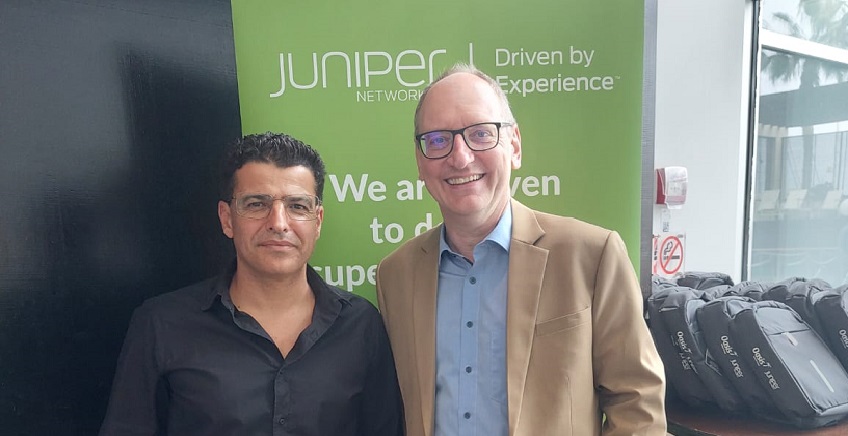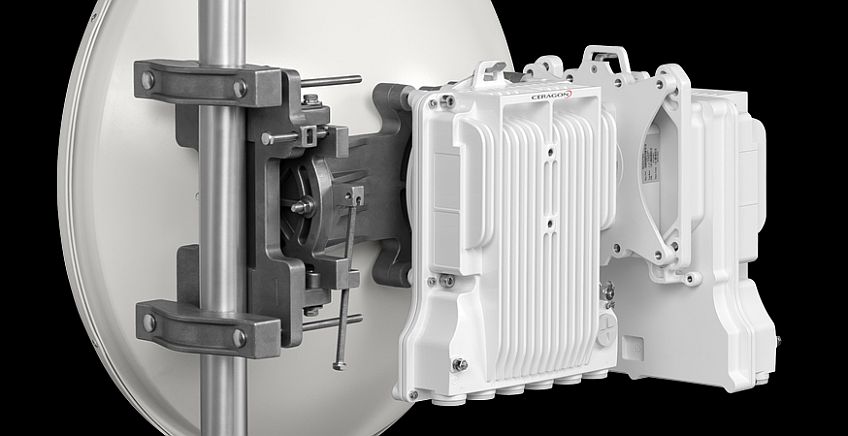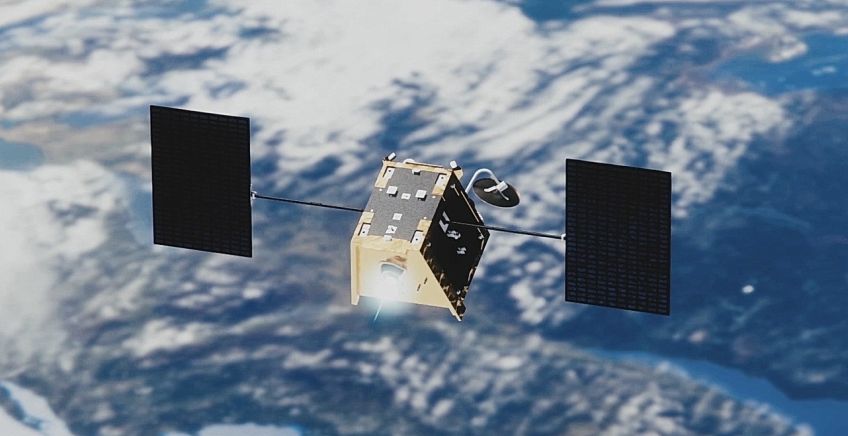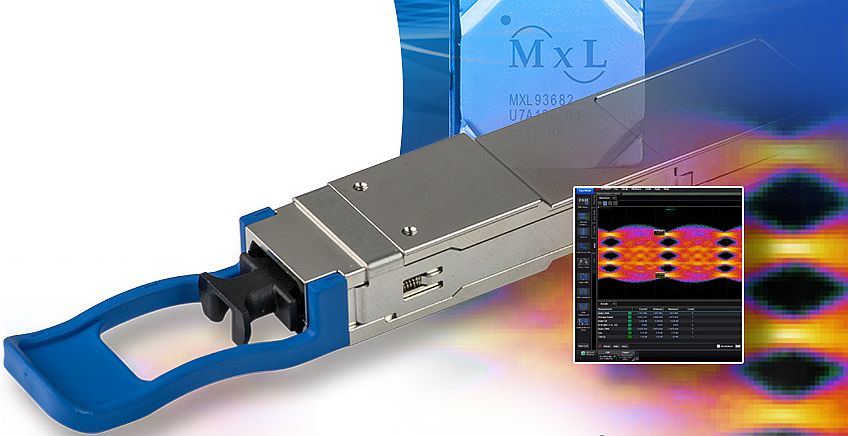“The challenges of the telecom providers are enormous. The key is AI”
14 December, 2022
Juniper Networks introduces AI-based solutions to ISPs to address the many challenges the telecom industry is facing. “We offer as a solution the 'automated network'"

The world has seen a gradual transition from 4G to 5G technology, mostly noticeable in the speeds that our smartphones can upload or download data. But this transition is about far more than smartphone speed; it represents a tectonic shift in the architecture of the network. Changes will include networks utilizing far more advanced equipment, designed to support not just user-based systems, but IoT devices as well – the number of which will expand exponentially in the coming years – along with the critical systems that advanced solutions like smart cities and self-driving vehicles require in order to operate properly. Those systems will require zero-latency communications, and the advanced 5G systems being developed will provide those capabilities
At the forefront of this revolution are ISPs and telecom companies – usually identified with “old school” communications. One reason for that is their ubiquity in the communication arena; they built the infrastructure, and have the expertise. But, they too, know the revolution is coming – and they require assistance to position themselves to provide the new services that will be required of them. One of the top sources of that assistance is Juniper Networks, a firm with a global footprint that is established as a leader in hardware and software solutions for advanced telecom. The Sunnyvale, California-based company provides equipment like smart routers and switches, as well as solutions to manage systems and security for networks.
Auto-pilot mode for networks
On a visit to Israel last month, Manfred Opificius, SVP and Global Head of Service Provider Sales at Juniper Networks, told TechTime in an interview that communication providers were dealing with technological, economical and business complicated challenges. “On the one hand, communication providers have fewer trained staff and less financial resources these days – but they are expected to cope with a huge increase in customer demand, and with those in-demand services delivered at high levels. More than that, a lot of telecom providers have a personnel challenge. Many younger workers who graduated top tech programs would rather work in cloud companies or startups, and not in ‘traditional’ telecom companies. Because of this, the companies have to add today the need to reduce energy requirements, both because of costs and environmental issues”, he said.
The key, according to Opificius, is automation. “The changes we are seeing make very clear the need for increased automation,” he said. “We at Juniper offer as a solution the ‘automated network’ – similar to self-driving vehicles, a network that operates on its own and regulates itself, requiring human intervention only in extreme situations, kind of like a Tesla self-driving vehicle. This approach reduces costs and energy usage, and frees up personnel from having to carry out routine chores, providing them with the opportunity to take on more important network management roles.”
The role of AI
The solutions offered by Juniper are enabled by advanced AI – technology that the firm developed in the wake of its 2019 purchase of Mist Systems for $405 million, by far the company’s most important acquisition to date. Juniper Mist technology integrates AI into the network, and to enable suppliers, communication firms, and organizations to manage their own networks automatically, with a special emphasis on service and automated solutions.
The Mist AI technology syncs very well with Juniper’s traditional hardware products, says Opificius. “Our objective is to bring AI to the world of telecom service providers, enabling them to automate systems,” he says. “With that, AI requires data – a lot of it – and data doesn’t create itself. We need to build data-gathering systems into the network. This data tracks issues like delay levels, communication losses, and data packet losses. The data also provides information on energy usage, with alarms triggered when systems are running too ‘hot,’ among other things. The more data you have, the better your network performance will be – and our ability to synergize equipment and data, gathering data and utilizing it in our systems, is our big advantage in the market. Taken all together, our system provides a holistic view of a communications network, from the level of the optical cable and system edge equipment, through to the wifi connections and the ways frequencies are distributed. For example, one large organization that utilizes our solution reported a 90% reduction in troubleshooting calls by users – representing a dramatic reduction in demands on the IT department, and a significant increase in customer experience satisfaction.”
As mentioned, these advanced networks need to support not just “human” needs, but the needs of the machines – the IoT devices – that will provide many mission-critical services in the coming years. According to Opificius, AI systems are the only viable solutions for management of IoT systems. “Unlike humans, IoT devices can’t complain, and our system not only provides solutions for improved human user experience, but for IoT ‘user experience’ too, like a smart traffic light or a smart city camera. The AI makes it possible to monitor the performance of these applications, based on parameters such as latency or fluctuations, and alert on problems and start a proactive intervention.”
The need to support critical infrastructure with near-zero latency results in the deployment of a widely distributed network. For example, safety systems for self-driving vehicles – like VX2 systems – cannot rely on networks managed on distant cloud systems; they need to be based on cloud systems that are very close by, in essence local servers that enable faster processing of data that needs to be deployed immediately.
Edge cloud deployments, meanwhile, become local communication nodes, in what is known as MAN – Metro Area Networks. According to Opificius, managing these MAN systems is the next big challenge for communication providers. “Intelligence is coming to the edge, largely because of the need for zero-latency. A decade ago, communications were centralized, based on large communication nodes. Today’s networks are becoming more and more distributed, and this requires greater bandwidth and high quality of service levels, including at the edge. Our estimates show that traffic on these MAN systems will grow five times in the coming years.”
Several months ago, Juniper introduced its Cloud Metro platform for the management and maintenance of these networks. Here, too, the system significantly reduces costs, and allows a new device on the network within minutes, according to Opificius.
The new reality, according to Opificius, “requires huge investment and operational efforts on the part of communication providers. We want to simplify this process for them. Our Metro Cloud platform enables providers to manage their metro networks as they would their wifi networks, turning every router in the metro network into an access point. This allows automatic and distance management of the distributed network, using a software-based system, thus enabling improved service and cost reductions.”
[Pictured above: Manfred Opificius (to the right), SVP and Global Head of Service Provider Sales at Juniper Networks, and Itzik Malka, Head of Juniper Networks in Israel]
Posted in: AI , Mobile , News , Telecom and Communication
Posted in tags: ISP , Juniper Networks , Manfred Opificius



